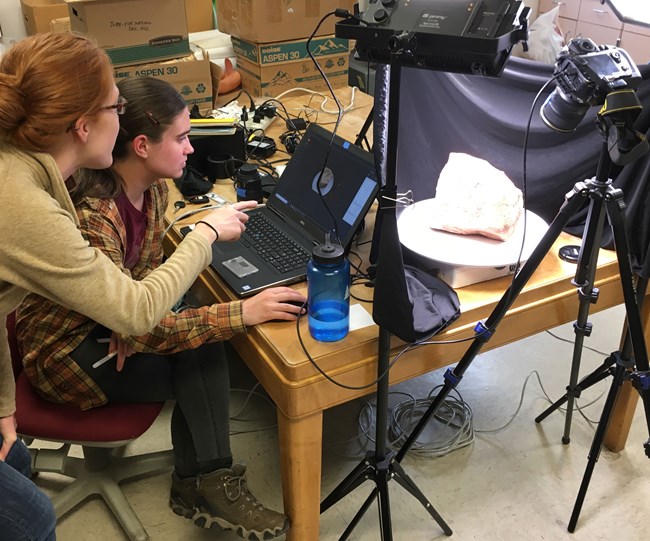
NPS photo by Jack Wood.
When you think of the Grand Canyon, what comes to mind? A vast geologic wonderland of layered rocks in beautiful shades of red, orange, and tan? The power of the mighty Colorado River that carved its way down to the canyon floor? Most people do not think of fossils when they think of the Grand Canyon. Perhaps it is because dinosaur fossils, the most charismatic group of prehistoric animals, are not found here. However, the canyon preserves a rich history of life on Earth that stretches back over a billion years. The fossil record of Grand Canyon National Park contains a wide variety of organisms, from ancient bacterial colonies to Ice Age mammals.

NPS photo by Jack Wood.
To mark the centennial of Grand Canyon National Park, Park Service paleontologists are undertaking an inventory project to summarize the park’s fossil record in a comprehensive report. This project has involved field surveys to document and collect important new fossils from the canyon, planning a National Fossil Day celebration, and digitizing fossils from the park’s museum collections via 3D photogrammetry. With this technology, many photographs of an object are taken from all angles, and these photographs are digitally stitched together into a 3D model. This method was used on fossils housed within Grand Canyon’s research collection to make them available for everyone to enjoy in digital form.
Last updated: May 30, 2023
